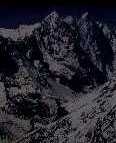
Junga Bahadur Rana
more detail...
|
MODERN PERIOD:
The Shah (or Sah) rulers faced tremendous and persistent problems in trying to centralize an
area long characterized by extreme diversity and ethnic and regional parochialism. They
established a centralized political system by absorbing dominant regional and local elites into
the central administration at Kathmandu. This action neutralized potentially disintegrative
political forces and involved them in national politics, but it also severely limited the centre's
authority in outlying areas because local administration was based upon a compromise
division of responsibilities between the local elites and the central administration.
From 1775 to 1951, Nepalese politics was characterized by confrontations between the royal family and several
noble families. The position of the Shah dynasty was weakened by the fact that the two kings who ruled
successively between 1777 and 1832 were minors when they ascended the throne. The regents and the nobility
competed for political power, using the young rulers as puppets; both factions wanted a monopoly of political
offices and power for their families, with their rivals exterminated, exiled to India, or placed in a subordinate
status. This was achieved by the Thapa family (1806-37) and, even more extensively, by the Rana family
(1846-1951). In these periods, the Shah ruler was relegated to an honorary position without power, while effective
authority was concentrated in the hands of the leading members of the dominant family. Although intrafamilial
arrangements on such questions as the succession and the distribution of responsibilities and spoils were
achieved, no effective national political institutions were created. The excluded noble families had only two
alternatives--to accept inferior posts in the administration and army or to conspire for the overthrow of the
dominant family. Until 1950 and to some extent thereafter, Nepalese politics was basically conspiratorial in
character, with familial loyalty taking precedence over loyalty to the crown or nation.
 PREVIOUS PAGE (middle period) |
NEXT PAGE (external relations) PREVIOUS PAGE (middle period) |
NEXT PAGE (external relations) 
|
